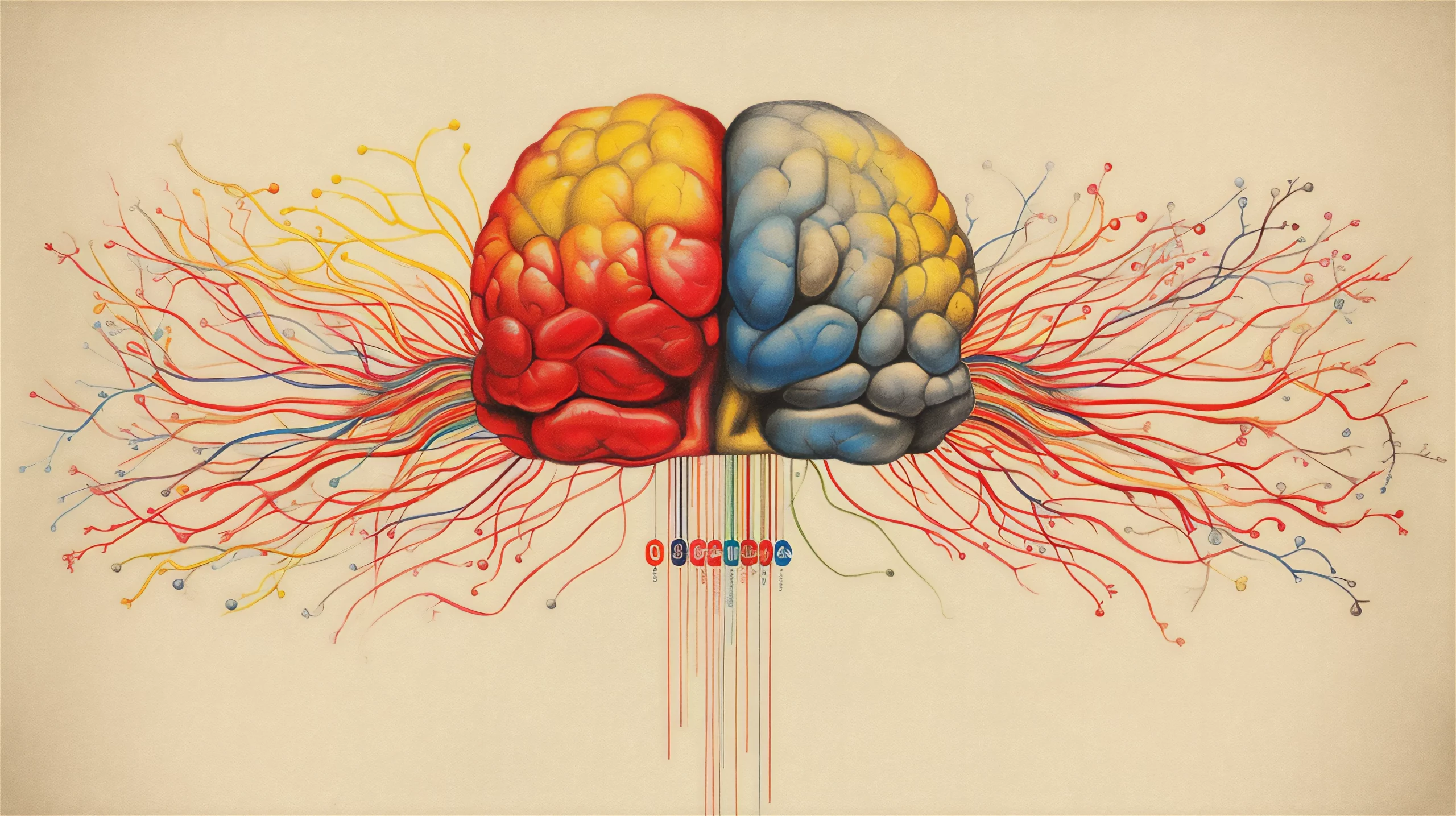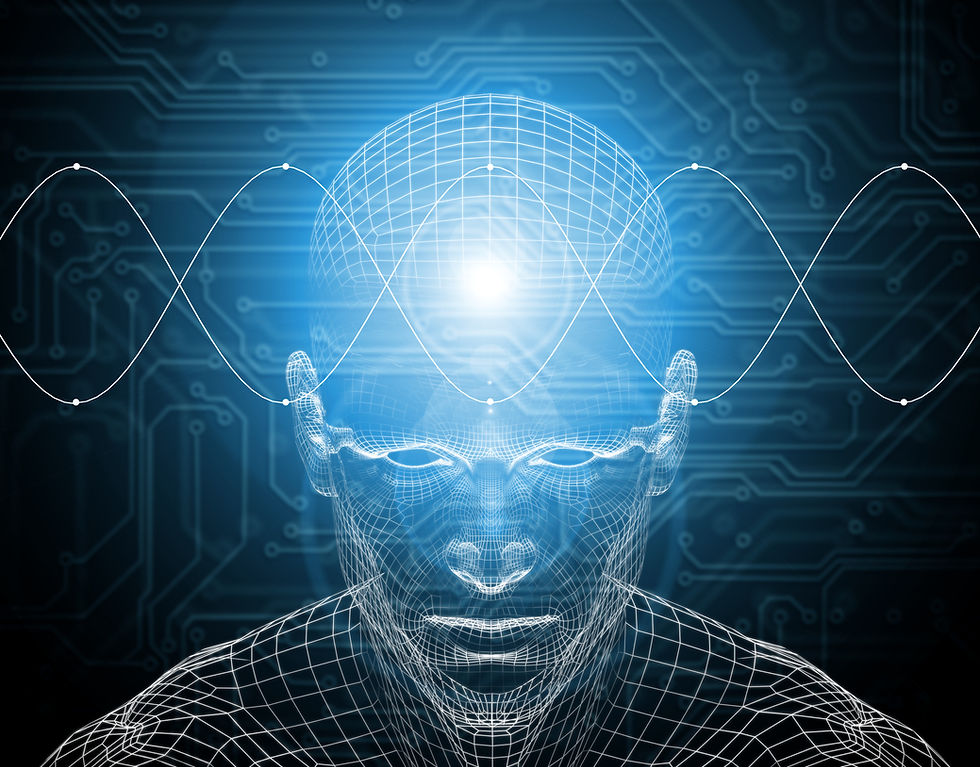DEBUNKED: Left Brain vs. Right Brain – Is One Side Really in Charge?
- skduo9
- Oct 1
- 4 min read
Figure 1: The left side of the brain is connected to puzzles while the right is connected to arts and crafts.This represents the stereotype that the left hemisphere is purely logical while the right is more creative.
“We’ve all heard someone proudly say, “I’m such a right-brain person—super creative and artsy!” or “Nope, I’m totally left-brain—logical and analytical.” Sounds neat, right? The problem is… it’s not true. In 2013, neuroscientists at the University of Utah scanned the brains of more than 1,000 people (ages 7 to 29) using advanced imaging techniques. They wanted to see if some people’s brains really showed more activity and stronger connections on one side than the other. The result? No evidence [1,2] As Dr. Sarah McKay, a neuroscientist who wrote extensively on this myth, explains: yes, certain tasks lean to one hemisphere (like language is usually more left-sided, and spatial awareness more right-sided). But personality traits like being creative, logical, emotional, or intuitive are not locked into one side of your brain. Both hemispheres are always in conversation, working as a team.[2] So, if you’ve been blaming your messy handwriting on your “creative right brain,” or crediting your Sudoku skills to your “logical left brain,” sorry to burst the bubble—it’s all you, using your whole brain.
The Origins

Figure 2: Roger W. Sperry was a neuroscientist who won the 1981 Nobel Prize in Physiology or Medicine for his pioneering work on “split-brain” research. The origin of the Left Brain vs. Right Brain myth goes back to neuroscience research in the 1960s and 1970s:
Roger Sperry and colleagues studied patients who had undergone “split-brain surgery” (cutting the corpus callosum to treat epilepsy). They found that some functions were more dominant in one hemisphere—for example, language in the left, and certain spatial/visual tasks in the right.[3]
These findings about lateralization of function were correct scientifically.
But popular media, self-help books, and education programs took it way too far, turning subtle scientific observations into a catchy stereotype:
Left brain = logical, analytical, mathematical.
Right brain = creative, artistic, emotional.
This oversimplification spread widely in the 1980s–1990s, especially through school programs, workshops, and pop psychology books.[4] In short: the scientific seed was real (lateralization exists), but the cultural myth that people are “right-brained” or “left-brained” personalities is a distortion.
Why the Myth Is Biologically Impossible
Let’s get this straight: your brain doesn’t run like a tug-of-war between two rival teams. It’s not “Team Left” vs. “Team Right.” Instead, your brain is more like a band—different instruments, yes, but they only make music when they play together. Here’s why the left brain/right brain myth falls apart under real neuroscience:
1. Both Hemispheres Are Always Talking.The two sides of your brain are connected by the corpus callosum, a thick cable of about 200 million nerve fibers. This means information is constantly zipping back and forth. Solving math problems? You need language (left) and spatial processing (right). Painting a picture? You’re using motor control, vision, and memory—across the whole brain. [1,2]
2. fMRI Shows No “Half-Brain” People. The University of Utah study (2013) scanned over 1,000 brains and found no evidence that people rely on one hemisphere more than the other overall. Creativity and logic aren’t locked to one side—they light up networks across both hemispheres. [2]
3. Evolution Doesn’t Waste Space.The brain is insanely expensive tissue: just 2% of body weight but burning about 20% of your energy. If one half were mostly sitting idle, natural selection would have trimmed it away long ago. Both hemispheres are in full use because both are essential. [4]
4. Lateralization ≠ Personality.Yes, some functions are lateralized (language often left, attention more right), but that doesn’t mean personality traits live on one side. Being creative or analytical isn’t a hemisphere thing—it’s a whole-brain activity. [1,3]
Click here to view figure 3 (scroll down to figure 9): (A) The region-based network is shown as a ball-and-stick model. The nodes are brain regions in the AAL atlas and their coordinates, sizes and colors represent the centroids, nodal strengths and modules of the regions, respectively. The edges represent the connections between different brain regions (top 15% are displayed). The functional connectivity strengths are presented as the radius of the edges, and long-distance connections (>90 mm) are colored in orange. (B) The voxel-based network is shown using volume-to-surface mapping. The values of the vertices on the surface indicate the normalized functional connectivity strength of the voxels in the volume data. Several hub regions with high connectivity strength are rendered in warm colors.
Why the Myth Is Harmful (Beyond Just Being Wrong)
At first glance, the left-brain/right-brain idea seems harmless—just a fun personality quiz you might take online. But this myth has real downsides:
1. It boxes people in.If you’re told you’re “not a math person” because you’re “right-brained,” you might stop trying. If you’re labeled “left-brained,” you may avoid creative pursuits. These stereotypes can actually limit potential rather than expand it.
2. It fuels a billion-dollar self-help industry. Books, apps, workshops, and even school programs have been built on this shaky idea, promising to “activate your right brain” or “boost your left brain.” Spoiler: you’re already using both.
3. It creates a false sense of destiny. Believing your personality or talents are hard-wired into one hemisphere makes it easy to blame the brain instead of recognizing that skills grow with practice, effort, and environment.
4. It distracts from the real science. The actual story of the brain—how billions of neurons communicate across vast networks—is way more fascinating. Clinging to the left vs. right cliché drowns out the truth.
And here’s the irony: Einstein is often held up as the ultimate “left-brain genius,” but he also played the violin. So much for staying in your hemisphere’s lane.
Sources:
Springer, S., & Deutsch, G. (1981). Left brain, right brain. . https://doi.org/10.2307/1422672.
Vallortigara, G., & Rogers, L. (2019). A function for the bicameral mind. Cortex, 124, 274-285. https://doi.org/10.1016/j.cortex.2019.11.018.
Iaccino, J. (1993). Left Brain - Right Brain Differences: Inquiries, Evidence, and New Approaches.
MacNeilage, P., Rogers, L., & Vallortigara, G. (2009). Origins of the left & right brain.. Scientific American, 301 1, 60-7 . https://doi.org/10.1038/SCIENTIFICAMERICAN0709-60.
Allen, K., & Zwan, R. (2019). The myth of the left- Vs right-brain learning. , 5, 189-200.








Comments